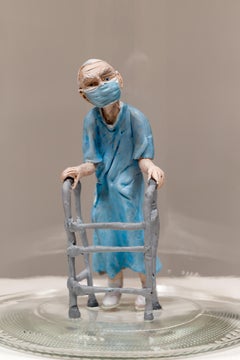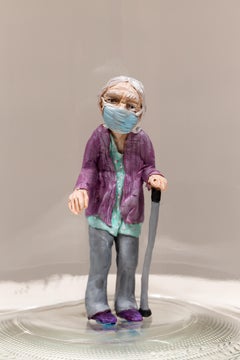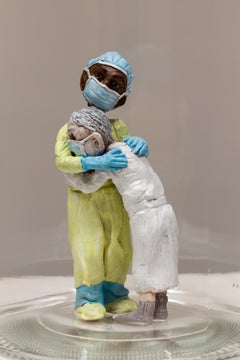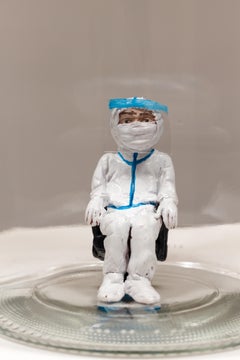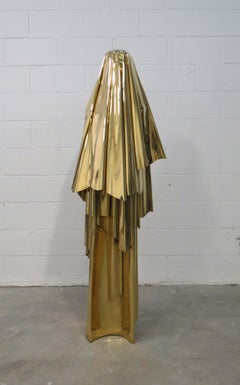Art Mûr
2010s Contemporary Figurative Sculptures
Acrylic Polymer, Ceramic
2010s Contemporary Figurative Sculptures
Acrylic Polymer, Ceramic
2010s Contemporary Figurative Sculptures
Acrylic Polymer, Ceramic
2010s Contemporary Figurative Sculptures
Acrylic Polymer, Ceramic
2010s Contemporary Figurative Sculptures
Acrylic Polymer, Ceramic
2010s Contemporary Figurative Sculptures
Bronze
2010s Contemporary Figurative Sculptures
Bronze, Steel
2010s Contemporary Figurative Sculptures
Concrete
2010s Abstract Abstract Paintings
Canvas, Latex, Wood Panel
2010s Abstract Abstract Paintings
Canvas, Latex, Wood Panel
2010s Abstract Abstract Paintings
Canvas, Latex, Wood Panel
2010s Abstract Abstract Paintings
Canvas, Latex, Wood Panel
2010s Abstract Abstract Paintings
Canvas, Latex, Wood Panel
2010s Abstract Abstract Paintings
Canvas, Latex, Wood Panel
2010s Abstract Abstract Paintings
Canvas, Latex, Wood Panel
2010s Abstract Abstract Paintings
Canvas, Latex, Wood Panel
2010s Abstract Abstract Paintings
Canvas, Latex, Wood Panel
2010s Abstract Abstract Paintings
Canvas, Latex, Wood Panel
2010s Contemporary Portrait Photography
Photographic Paper
2010s Contemporary Portrait Photography
Photographic Paper
2010s Contemporary Portrait Photography
Photographic Paper
2010s Contemporary Portrait Photography
Photographic Paper
2010s Contemporary Figurative Sculptures
Stone
2010s Abstract Abstract Paintings
Canvas, Acrylic
2010s Abstract Abstract Paintings
Canvas, Acrylic
2010s Contemporary Figurative Sculptures
Concrete
2010s Contemporary Figurative Sculptures
Concrete
2010s Contemporary Figurative Prints
Digital
2010s Contemporary Abstract Sculptures
Concrete, Metal
2010s Contemporary Figurative Sculptures
Stone, Metal
2010s Contemporary Abstract Photography
Digital
2010s Contemporary Figurative Sculptures
Concrete
2010s Contemporary Figurative Sculptures
Acrylic Polymer
2010s Contemporary Figurative Sculptures
Concrete
2010s Contemporary Figurative Sculptures
Concrete
2010s Contemporary Figurative Sculptures
Concrete
2010s Contemporary Figurative Sculptures
Concrete
2010s Contemporary Figurative Sculptures
Concrete
2010s Contemporary Figurative Sculptures
Concrete
2010s Contemporary Figurative Sculptures
Wood, Plaster, Oil
2010s Contemporary Figurative Sculptures
Wood, Plaster, Oil
21st Century and Contemporary Photography
Photographic Paper
21st Century and Contemporary Photography
Photographic Paper
21st Century and Contemporary Photography
Photographic Paper
21st Century and Contemporary Photography
Photographic Paper
21st Century and Contemporary Photography
Photographic Paper
2010s Abstract Figurative Paintings
Oil, Wood Panel
2010s Abstract Figurative Paintings
Oil, Wood Panel
2010s Abstract Figurative Paintings
Oil, Wood Panel
2010s Abstract Figurative Paintings
Oil, Wood Panel
2010s Abstract Figurative Paintings
Oil, Wood Panel
2010s Abstract Figurative Paintings
Oil, Wood Panel
2010s Abstract Figurative Paintings
Canvas, Oil
2010s Abstract Figurative Paintings
Oil, Canvas
2010s Contemporary Figurative Sculptures
Paper
2010s Contemporary Figurative Sculptures
Color, Mixed Media, Glass
2010s Abstract Abstract Sculptures
Metal
2010s Contemporary Figurative Paintings
Acrylic, Canvas
2010s Contemporary Figurative Photography
Photographic Paper
2010s Contemporary Figurative Sculptures
Metal
